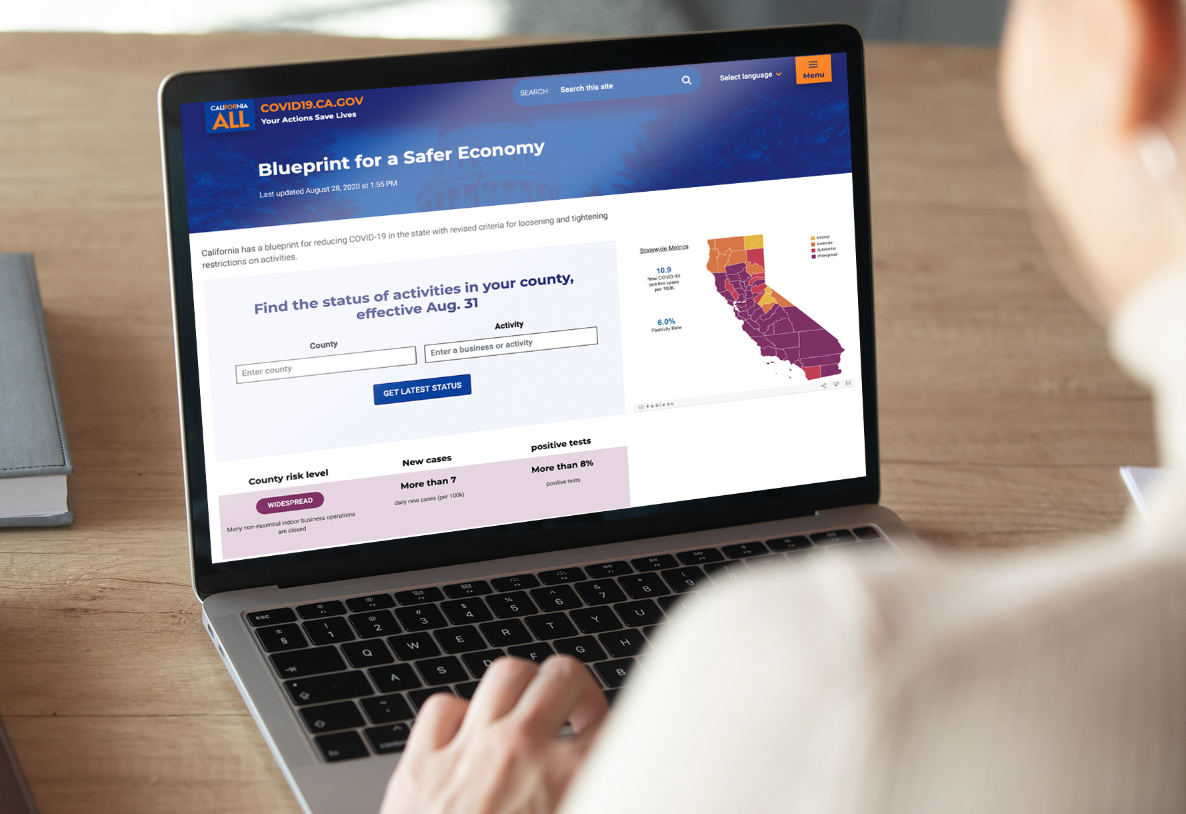The California Department of Public Health has reviewed Orange County’s COVID-19 data and determined it will be necessary to wait an additional two weeks before allowing in-person instruction.
The state now says local schools are on track to reopen to students on Tuesday, Sept. 22, according to County Health Officer Dr. Clayton Chau.
On Aug. 28, the same day Governor Gavin Newsom announced a new four-tiered system to track COVID-19 progress by county, Dr. Chau said he was told that as long as coronavirus rates continued to drop, Orange County campuses would be in a position to reopen right after Labor Day.
But even though the county is expected to be reclassified into a less restrictive “red tier” on Sept. 8, the state says it has to remain in that tier for another 14 days before schools can welcome back students.
“I know how frustrating it is to be in this position, given the complex planning it takes to restart our campuses,” County Superintendent Al Mijares said Monday night. “Dr. Chau has advocated strongly on our behalf, but the state was firm in its response.”
County Health Officer received confirmation from @CAPublicHealth that #OC is on track to enter into Red Tier on Sept. 8. Providing we meet Red Tier metrics at that time, there will be a 14-day wait for all K-12 schools to be eligible for reopening, which could happen on Sept. 22.
— OC Health Care Agency (@ochealth) September 1, 2020
Orange County is reporting just 5.6 daily new cases per 100,000 residents and a testing positivity rate of 5 percent, which is technically good enough to qualify for the less restrictive red tier. Local coronavirus infection rates are also trending in the right direction.
But when the new model debuted, each county was assigned its initial tier based on data from the two prior reporting periods. By that measure, Orange County started out in the more restrictive “purple” category.

That’s significant because schools in the purple tier — signifying widespread transmission — cannot reopen for in-person instruction unless they obtain a waiver from their local health department, and that’s only for grades TK through 6. Schools in the red tier can reopen for in-person instruction, with precautions, as long as they’ve been red for at least two weeks.
While it was initially thought that Orange County would be credited from the start with one week in the red tier — meaning there would be one week to go — the state confirmed otherwise after county health officials sought clarification.
The state’s new Blueprint for a Safer Economy, which took effect Monday, included revised criteria for easing and tightening restrictions on businesses, activities and schools.
Rather than being on or off a watchlist for elevated COVID-19 numbers, counties in California are now sorted into one of four tiers — purple, red, orange or yellow — based on their rates of new cases and testing positivity percentages.
Here’s a more detailed breakdown of the four tiers:
Widespread (purple)
Indicating widespread transmission, this group essentially replaces the state’s old watchlist and calls for most non-essential businesses to remain closed. The criteria is more than 7 new daily COVID cases per 100,000 residents and a testing positivity rate of 8 percent or higher. Schools in this tier aren’t permitted to reopen for in-person instruction unless they receive a waiver from their local health department, and that’s only for grades TK-6.
Substantial (red)
This category indicates substantial transmission, and some non-essential indoor businesses must remain closed. The criteria is 4 to 7 new daily COVID cases per 100,000 residents and a testing positivity rate of 5 to 8 percent. Schools can reopen for in-person instruction once their county has been in this tier for at least two weeks. Schools that reopen must follow state guidelines.
Moderate (orange)
This tier indicates moderate transmission, and some businesses can open with modifications. Criteria is 1 to 3.9 new daily COVID cases per 100,000 residents and a testing positivity rate of 2 to 4.9 percent. Schools can reopen for in-person instruction following state guidelines.
Minimal (yellow)
This indicates minimal transmission, and most businesses can reopen with modifications. Criteria is less than 1 new daily COVID case per 100,000 residents and a coronavirus positivity rate of less than 2 percent. Schools can reopen for in-person instruction following state guidelines.
As of last week, 38 counties are in the purple tier, representing about 87 percent of the population.
The governor said data will be reviewed weekly, and tiers will be updated every Tuesday. A county must remain in its tier for three weeks. But to advance to the next tier, a county must meet the next tier’s criteria for at least two consecutive weeks.
If a county’s metrics worsen for two straight weeks, it will bounce back to a more restrictive tier. Public health officials said they will constantly monitor data and can intervene if necessary.
“We’re going to be more stubborn this time,” Newsom said. “This is more stringent, but we believe it is a more steady approach.”
Newsom acknowledged the new system may not be as easy to understand as the watchlist, but the intent is to provide more transparency, he said.
“COVID-19 will be with us for a long time, and we need to adapt,” the governor said.
